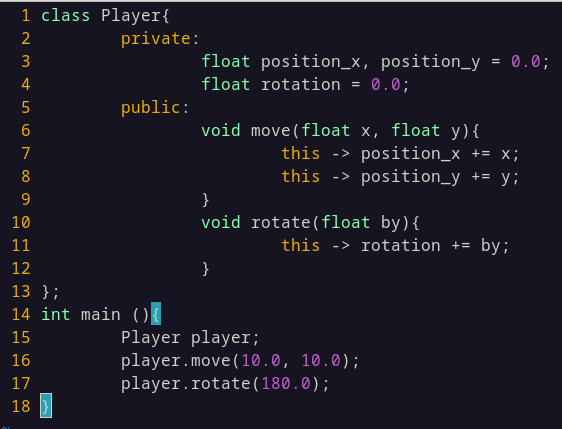I lived in a perfect OOP bubble for my entire life. Everything was peaceful and it worked perfectly. When I wanted to move that player, I do player.move(10.0, 0.0); When I want to collect a coin, I go GameMan -> collect_coin(); And when I really need a global method, so be it. I love my C++, I love my python and yes, I also love my GDScript (Godot Game Engine). They all work with classes and objects and it all works perfectly for me.
But oh no! I wanted to learn Rust recently and I really liked how values are non-mutable by defualt and such, but it doesn't have classes!? What's going on? How do you even move a player? Do you just HAVE to have a global method for everything? like
move_player();
rotate_player();
player_collect_coin();
But no! Even worse! How do you even know which player is meant? Do you just HAVE to pass the player (which is a struct probably) like this?
move(player);
rotate(player);
collect_coin(player, coin);
I do not want to live in a world where everything has to be global! I want my data to be organized and to be able to call my methods WHERE I need them, not where they just lie there, waiting to be used in the global scope.
So please, dear C, Rust and... other non OOP language users! Tell me, what makes you stay with these languages? And what is that coding style even called? Is that the "pure functional style" I heard about some time?
Also what text editor do you use (non judgemental)? Vim user here

The
struct Playerandimpl Playerworks as a class, with the difference that the struct block defines the attributes, e.g. position, and the impl defines the methods, e.g. move operation, as you figured out.What Rust does not have is inheritence like you do for classes, instead you have
traits.Say you have a vector class. You will need some objects of rotating vectors, some objects of translation vectors, and some objects that can do both rotation and translation. You do a subclass of this vector class for rotating vectors, you make another subclass for translating vectors... you know what? Maybe all rotating vectors have to be also translating vectors, because you sometimes need a subclass which needs both. Ok. Or something like that might be your solution.
In Rust you'd instead define a rotation and translation trait, by saying structs dressed in this trait must have a method taking this and that argument, returning this and that. You make an impl block defining what these methods should look like for your vectors. You can dress one struct in several traits, so you have one struct which you give both the rotation and translation trait.
The bonus with traits now is now that later you realize that, ah, not only my pure vectors needs to be able to rotate. My Car struct needs to rotate, or my Planet struct, whatever. Great, you have a trait you can give to those structs and it will have the same methods as your rotating pure vectors.
I'm not a proper programmer, so this may all be a bit misleading. This is just how I think about it when I'm using Rust.